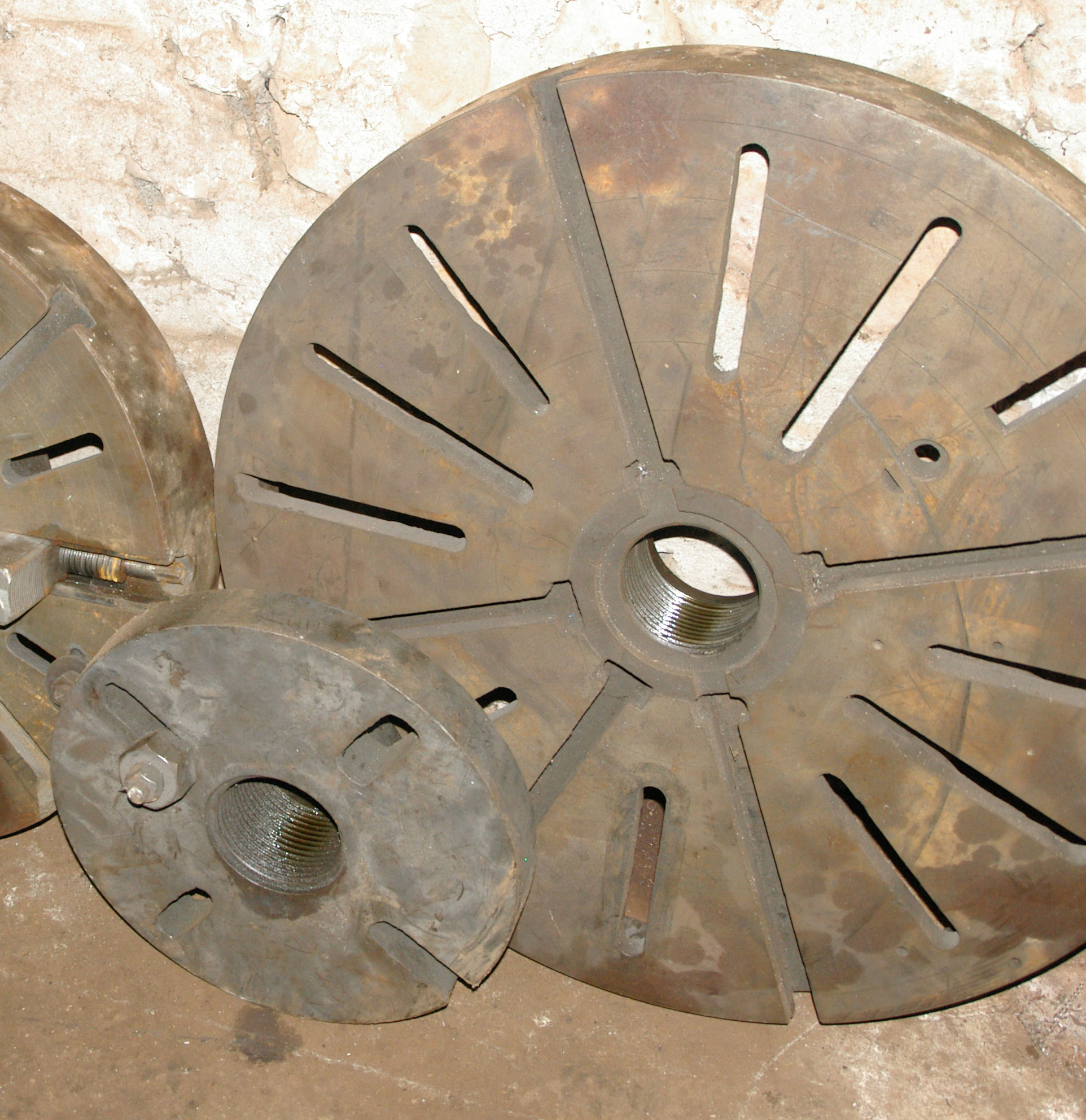Lathe Faceplate on:
[Wikipedia]
[Google]
[Amazon]

 A lathe faceplate is a basic workholding accessory for a wood or metal turning
A lathe faceplate is a basic workholding accessory for a wood or metal turning
"Locating Faceplate for your Lathe."
''Popular Mechanics'', December 1954, pp. 203-205. {{Metalworking navbox, machopen Lathes

 A lathe faceplate is a basic workholding accessory for a wood or metal turning
A lathe faceplate is a basic workholding accessory for a wood or metal turning lathe
A lathe () is a machine tool that rotates a workpiece about an axis of rotation to perform various operations such as cutting, sanding, knurling, drilling, deformation, facing, and turning, with tools that are applied to the workpiece to c ...
. It is a circular metal (usually cast iron) plate which fixes to the end of the lathe spindle
Spindle may refer to:
Textiles and manufacturing
* Spindle (textiles), a straight spike to spin fibers into yarn
* Spindle (tool), a rotating axis of a machine tool
Biology
* Common spindle and other species of shrubs and trees in genus ''Euony ...
. The workpiece
A workpiece is a piece, often made of a single material, that is being processed into another desired shape (such as building blocks).
The workpiece is usually a piece of relatively rigid material such as wood, metal, plastic, or stone. After a ...
is then clamped to the faceplate, typically using t-slot nut
A T-slot nut is used with a threaded clamp to position and secure pieces being worked on in a workshop. The T-slot nut slides along a T-slot track, which is set in workbench or table for a router, drill press, or bandsaw. T-slot nuts are also use ...
s in slots in the faceplate, or less commonly threaded holes in the faceplate itself.
The faceplate may be attached to the lathe in several ways: the two most common are a thread and a precision cone arrangement, and threaded studs and a circular recess fitting a flange on the end of the spindle. Increasingly common is the camlock arrangement, in which shaped studs and cams replace threaded studs for rapid exchanging of the faceplate with other accessories, such as three or four jaw chucks.
The faceplate was the ancestor of lathe chucks, an arrangement of three or more adjustable 'dogs' bolted to the faceplate providing a primitive chuck arrangement. The smaller plate in the upper photo is specifically a 'dog face' with slots intended to hold a bent tail dog while the work itself was supported on centers. The larger plate to the right simply provides a variety of ways by which work can be bolted or clamped to the plate. The slotted plate on the lower photo accepts wedged holders which can be used to fasten the work to the plate. The plates were expendable, so it was not unusual as shown in both photos for a machinist to drill additional holes in the plates for attaching work that could not otherwise be attached. While the dog plates were usually fairly small regardless of the lathe size, the classic face plate is usually matched to the maximum diameter that the lathe will swing.
It may seem that a faceplate is a primitive accessory superseded by precision chucks, but its inherent flexibility (almost any shape can be attached to a faceplate with care and the right fixings) and the possibility of achieving great accuracy by careful setup make it essential for a well equipped lathe.
For certain specialist jobs, temporary or special faceplates can be made, perhaps in wood or light alloy, that can be machined or adapted for difficult workholding jobs. One example might be attaching thin sheet metal to a wooden faceplate using wood screws, allowing the trepanning
Trepanning, also known as trepanation, trephination, trephining or making a burr hole (the verb ''trepan'' derives from Old French from Medieval Latin from Greek , literally "borer, auger"), is a surgical intervention in which a hole is drill ...
of holes, with the tool cutting into the sacrificial faceplate material.
See also
*Lathe carrier
A lathe dog is a mechanical device typically made of cast iron, steel or aluminum that transmits rotary motion from a faceplate to a workpiece mounted between centers in a lathe. The tail of the dog is rotated by a slot in a driving faceplate, ...
* Angle plate
An angle plate is a work holding device used as a fixture in metalworking.
Angle plates are used to hold workpieces square to the table during marking out operations. Adjustable angle plates are also available for workpieces that need to be inc ...
External links
"Locating Faceplate for your Lathe."
''Popular Mechanics'', December 1954, pp. 203-205. {{Metalworking navbox, machopen Lathes